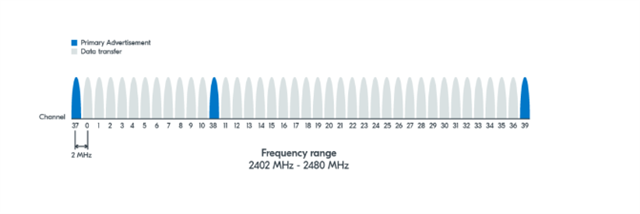Greetings!
I am looking into Bluetooth Mesh, and the allowed radiated power according to Norwegian law. The general limit for 2.4GHz is 10mW, but if we utilize FHSS the limit is 100mW. If we use other frequency-hopping strategies (DSSS?) the limit is 10mW/MHz. So we can use higher power if we do frequency hopping.
This brings me to my question: what frequency hopping techniques are in Nordic's implementation of Bluetooh Mesh? And (if applicable) what is the bandwidth that I should plug into the 10mW/MHz formula?
I have seen that frequency hopping was not recommended for "swarms" or "meshes" 5 years ago (devzone.nordicsemi.com/.../229217), but I don't think Torbjørn is talking about Bluetooth Mesh in his answer.
I have also seen that DSSS is implemented in the "Wireless UART" sample (https://devzone.nordicsemi.com/f/nordic-q-a/48486/2-4ghz-models-support-dss-or-fhss), but this is not Bluetooth Mesh, which might be different.
-Fridtjof



